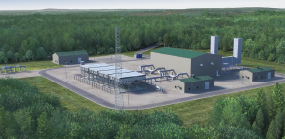Hydrostatic pressure testing of existing pipelines presents unique safety, operating, environmental and community liaison challenges beyond those encountered in commissioning new pipelines. In addition, outside the pipeline industry there is limited understanding regarding technical and practical considerations of conducting hydrostatic pressure testing of existing pipelines.
This White Paper addresses these matters by providing technical, operational, practical and safety guidance in the planning, design and execution of hydrostatic pressure tests of existing pipelines. This paper is directed toward natural gas transmission pipeline operators and other industry stakeholders interested in understanding the challenges and means of successfully conducting hydrostatic pressure tests of existing pipelines in densely populated areas. This paper will:
- Define and explain the mechanics of the hydrostatic pressure test process.
- Identify the risks associated with hydrostatic pressure testing of existing facilities in high consequence areas (HCAs).
- Describe the data and information about the pipeline and area along the pipeline that is necessary to prepare for a hydrostatic pressure test.
- Identify the data and information necessary to protect the public, workers and environment when conducting a hydrostatic pressure test.
- Present the communication and coordination efforts with state, local/public leaders and regulatory agencies.
- Address ways to mitigate public inconvenience during pre-test planning, site preparation, test execution and post-test restoration activities.
- Compare and contrast a successful test to an unsuccessful one and explain the respective results and consequences of each.
- Identify new technologies and research and development (R&D) in the works that might potentially supplement hydrostatic pressure testing.



